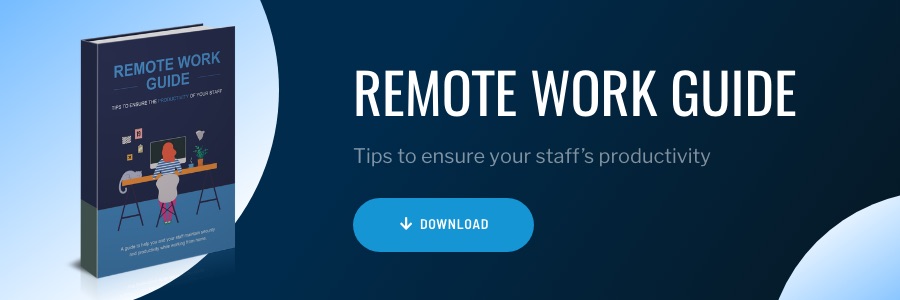How to monitor remote workers
Remote work offers many advantages, but it also brings challenges—chief of which is the issue of how to keep employees on task when you can’t see what they are doing. Whether it’s a permanent transition or your team is working from home solely for the duration of the COVID-19 crisis, remote employee monitoring removes the guesswork from maintaining productivity. As a company that’s been helping clients manage their remote teams for more than a decade, we can help you. In this article we’ll outline the benefits of remote work monitoring and offer some suggestions for implementing a remote work monitoring system that ensures your working-from-home team is getting things done.
The Benefits of Remote Work Monitoring
With more and more employees working remotely, many employers are grappling with the challenge of keeping track of productivity. Without successful intervention, this can lead to a substantial decline in performance and a subsequent loss of earnings, as unproductive employees go unnoticed. However, by leveraging remote employee monitoring, employers can take control of the situation. With an effective monitoring system in place, they can:
- Maximize billing by accurately documenting the time spent on client projects
- Enable team members to work more productively because they know precisely what they need to do
- Nurture a sense of trust and accountability because both employees and their managers know work is being completed efficiently
- Give managers a complete understanding of the progress on each project
- Allow managers to focus on team leading rather than micromanaging
- Give freelancers and independent contractors certainty about their documented hours so they can justify billing
There are several remote employee time-tracking and monitoring software platforms on the market, each with a different range of features and use cases. Consider a full suite of remote employee monitoring tools, such as Teramind’s all-inclusive remote employee monitoring solution. It will monitor the activity and behavior of your remote workers, track time and expenses, record employee engagement with comparative metrics such as active vs. idle time, remotely observe and control the remote worker’s desktop, and enforce your company’s security policy even when your employees are offline.
Remote employee monitoring needs to be implemented properly, and when it is, it can have transformative effects. If you adopt an effective approach to remote worker monitoring, you can look forward to improved employee loyalty and performance, leading to reduced costs, higher profits, and a more streamlined and productive business.
The Correct Approach to Remote Employee Monitoring
Now that you have learned about the benefits of remote employee monitoring, you may be considering how to introduce it in your own company. Here is the approach we recommend:
- Identify your reasons for introducing remote employee monitoring. Whether it is to optimize billing, increase team productivity, or oversee performance, your primary objectives will influence your choice of software. Perhaps your chief priority is a solution that offers tracking of engagement and time, so that you can reduce expenses and maximize productivity. Ensure the product you choose includes the features you need to meet your goals. Such features could include URL and application monitoring, activity tracking, or simply basic time-tracking features.
- Once you have decided what features your remote monitoring system needs, reach out to your provider. Zeta Sky’s remote-working solutions deliver an effective and secure work-from-home transition based on more than a decade of experience in cloud technologies. We can assess what’s needed to fill gaps in your current remote-working capabilities and provide tailored solution recommendations.
- Introduce the new remote worker monitoring policy to your team. Be as positive as possible about it, emphasizing how it will enable team members to take ownership of their work and provide opportunities for them to highlight their individual performance. Give your team the opportunity to provide feedback on the new policy and keep track of how they are faring with it every few weeks. This will also allow you to share what you have learn about productivity and work patterns.
- Encourage accountability. Once the new remote employee monitoring policy is in place, you need to establish a culture of tracking and monitoring time. Start from the top, sharing your own time sheet and activity levels with your team, so that they don’t feel as if the new software is simply there to keep tabs on them. Openness about timesheets may help motivate staff and encourage healthy competition, as individuals compare their performance with that of their colleagues. You could even give prizes to your most efficient employees, encouraging staff to take responsibility for their own workloads.
- Finally, be sure to integrate remote employee time tracking and remote monitoring results into your company workflows. This ensures that employees consistently track their time.
Where to Find Out More
If your business is grappling with the challenge of setting up a remote work environment, contact Zeta Sky today. We can get you and your team connected so that you can work as easily and productively at home as you did in the office.

